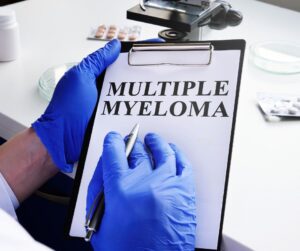Patients with cancer may struggle to understand medical terminology healthcare professionals use, leading to missed opportunities for early detection or effective treatment.
Advanced practice providers are frequently at the forefront of patient care, which can be challenging as they must communicate intricate medical concepts to patients. Therefore, it is crucial to have clear communication between patients and providers.
To understand specific medical terms, patients need adequate medical knowledge and experience. However, medical jargon is often unique to the medical field, making it more challenging to comprehend. Moreover, medical language may also include using unfamiliar terminology and acronyms that can further complicate communication. For example, terms such as “carcinoma,” “metastasis,” and “malignant” can often be confusing, leading to misunderstandings and unwarranted panic. Additionally, healthcare professionals may assume that patients are familiar with medical terminology, making them less likely to explain things in layperson’s terms.
Misunderstandings or ignorance of medical jargon can have severe consequences for cancer patients. Patients may miss crucial details about care, treatment, and next steps. Unfamiliar terminology can even deter patients from seeking medical treatment altogether. Hence, healthcare providers must use plain language and explain medical terms to patients in ways they can comprehend.
Strategies for Improving Patient-Provider Communication
Effective communication can improve healthcare service satisfaction and patient health outcomes. Healthcare providers should use plain language and clear explanations when communicating with patients, avoiding medical jargon and complex terminology that patients will find confusing or intimidating. Providers should use language easily understood by patients with varying levels of health literacy. Clear explanations can help patients understand their medical conditions, treatments, and options, improving health outcomes and patient satisfaction.
Effective communication is about more than conveying information. It also involves acknowledging and addressing patients’ emotions and concerns. A supportive and empathetic environment can help patients feel more comfortable and at ease, leading to better communication. Providers should listen actively to patients, ask open-ended questions, and provide emotional support.
In addition to verbal communication, patients also benefit from written materials and reliable resources (see Table). Providers should provide patients with clear, concise written information about their medical conditions, treatments, and options. These materials should be plain language and address patients’ concerns and questions. Additionally, providers can direct patients to reliable resources, such as online resources or patient support groups, brochures, or pamphlets that can help them learn more about their conditions and treatments.
| Table. Online Resources for Patients With Cancer | |
| Resources | Description |
| Cancer.Net | The best cancer care starts with the best cancer information. With more than 45,000 members who are leaders in advancing cancer care, the American Society of Clinical Oncology (ASCO) is the voice of the world’s cancer physicians. |
| OncoLink | OncoLink was the first cancer information website on the Internet, started in 1994, and remains one of the largest. This award-winning site is maintained by a group of oncology healthcare professionals who understand the need of patients, caregivers, and healthcare professionals. |
| American Cancer Society | An organization providing cancer information, educational programs, and community outreach, both nationally and internationally |
| Centers for Disease Control and Prevention | Comprehensive information on cancer and other health and safety topics, including a resource library and links to publications and reports. The site also offers recommendations on preventive cancer screening |
| MedlinePlus | U.S. National Library of Medicine and National Institutes of Health site with comprehensive health education, drug information, and medical news. |
| PDRHealth | It provides disease education, treatment options, clinical trial information for cancer, and many other topics. It also supplies comprehensive information on prescription and over-the-counter drugs, herbal medicines, and nutritional supplements. |
Healthcare professionals can utilize these additional strategies to communicate with their patients effectively:
- Provide relatable examples: Analogies and everyday language can help patients connect medical terms to something they already know and understand. For instance, when explaining how immunotherapy drugs work, healthcare professionals can discuss how immune checkpoint inhibitors work by blocking checkpoint proteins from binding with their partner proteins rather than going into deep details about PD-1 receptors, antigens, and a major histocompatibility complex.
- Engage in active listening: Encouraging patients to ask questions, listening to their concerns, and checking for understanding can help healthcare providers adjust their language and approach accordingly. Active listening is essential to effective communication and should be encouraged.
- Visual aids and educational materials: Technology can be utilized to provide visual aids, diagrams, and educational materials to simplify complicated medical information and improve patient comprehension. Videos and animations can be beneficial in explaining complex medical procedures and treatments.
- Ongoing communication: Encouraging regular contact with patients can provide a better understanding of their condition and treatment options. Remote monitoring and telemedicine allow healthcare providers to stay close to patients, answer questions, and address concerns in real-time.
Better communication practices increase patient satisfaction, trust, and confidence in healthcare providers and improve health outcomes. The healthcare system also benefits from clear and effective medical communication, as it can reduce the risk of medical errors and lower costs associated with poor patient compliance.

For more information
Kwame, A., Petrucka, P.M. A literature-based study of patient-centered care and communication in nurse-patient interactions: barriers, facilitators, and the way forward. BMC Nurs 20, 158 (2021). https://doi.org/10.1186/s12912-021-00684-2
Communication and Dissemination Strategies To Facilitate the Use of Health-Related Evidence | Effective Health Care (EHC) Program. (n.d.). https://effectivehealthcare.ahrq.gov/products/medical-evidence-communication/research-protocol
Mozafaripour, S. (2023). The Importance of Effective Communication in Nursing. University of St. Augustine for Health Sciences. https://www.usa.edu/blog/communication-in-nursing/
The Joint Commission. National Patient Safety Goals. Communicating Clearly and Effectively to Patients https://store.jointcommissioninternational.org/assets/3/7/jci-wp-communicating-clearly-final_(1).pdf
American Society of Clinical Oncology. “Patient-centered care.” Cancer.Net. https://www.cancer.net/navigating-cancer-care/cancer-basics/what-cancer/patient-centered-care







